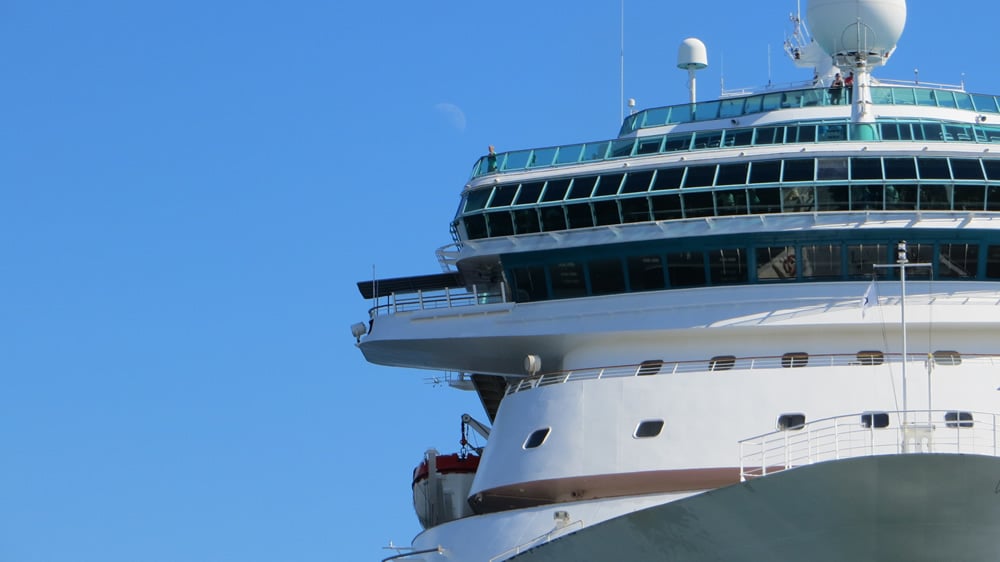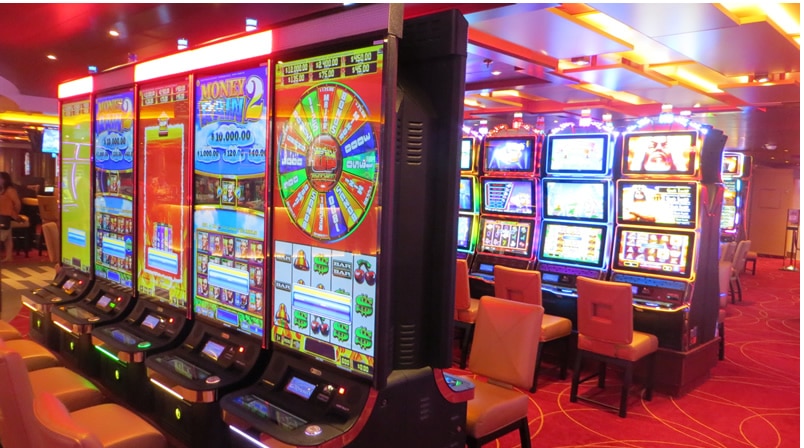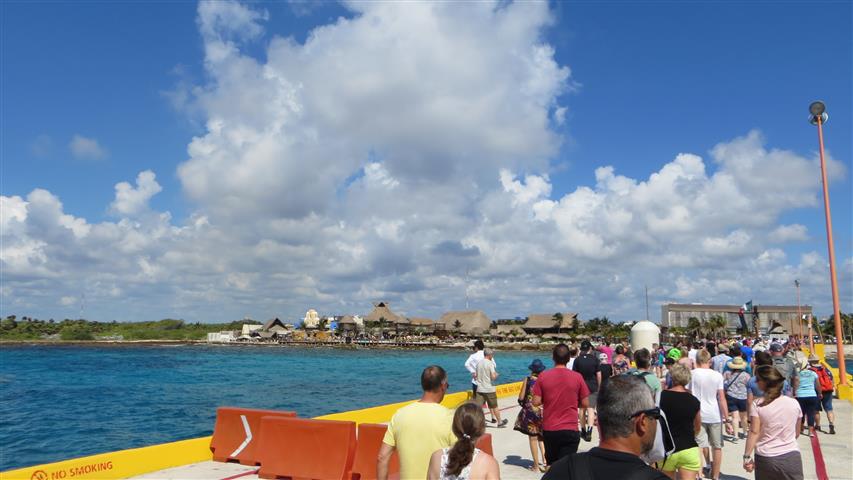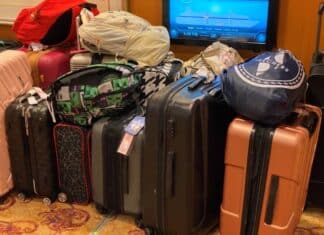Experienced cruisers know a thing or two when it comes to sailing. But if you’re a first-timer or maybe just cruise casually, then there are plenty of “secrets” that you may not realize about taking a cruise.

From little-known things about money spent on the ship to drink package rules to items tucked away in that cruise ticket contract that you agree to when you purchase a ticket, there are plenty of things that might surprise most people.
This isn’t to say there is anything nefarious going on, just a number of items about taking a cruise that many people simply don’t realize…
The Headline Cruise Fare Is Just a Fraction of What You’ll Pay
If you’ve never taken a cruise before, then you might be in for some shock when it comes time to actually pay for the trip.
Cruises are marketed as affordable, and for a vacation, they definitely can be. But the sticker price you see advertised is much lower than what you’ll actually end up paying, often by a factor of two to three times.
That’s because the prices shown at the start of booking or in marketing material is just the cruise fare for the least-expensive interior room, and on a per-person basis.
Since cruise cabins are normally sold on a double-occupancy basis, the price is doubled right away. As well, if you want anything more than an interior cabin — such as a balcony room — then you’ll pay more.
On top of all that, you have port fees and taxes, which can add another $100-$200 per person in many cases.
All that adds up to a much higher prices than you might expect.
For instance, we just priced a cruise 7-day cruise from Miami aboard Symphony of the Seas in July 2022. The sailing has a headline fare of $1,110 for the lowest-priced interior cabin. But once we priced it all out for two people in an interior cabin with taxes and fees, the cost was $2,500 — and that doesn’t include gratuities that would also be added on.
Sales Run 24/7… And Usually Come to Around the Same Price
If you’re the sort of person who likes to buy things only when they are on sale, well you don’t have to wait to buy a cruise. The lines run constant sales. No matter when you are looking to book, there will be some sort of offer going on.
And while the lines often try to make these sales seem exclusive or limited, they normally aren’t. For instance, Norwegian Cruise Line has run some version of their “Free at Sea” sale for years now. Royal Caribbean regularly offers “60% off” a second passenger.
Yes, there are tweaks here and there to the offers, but if you are waiting around for a big sale that results in a much lower price, it’s unlikely to happen.
Instead, what has the biggest impact on what you’ll pay isn’t when you book the trip, but instead when you sail. Trips that depart when school is in session (such as January or October) are going to be much less expensive than the same cruise departing during the summer or Spring Break.
A Huge Chunk of Money Is Made Once on the Ship (More Than You Realize)
If you thought that you were done spending money once the cruise was paid for, then one secret you should know is that you should plan to spend hundreds more.
Your cruise fare covers a lot. It takes care of your room, most entertainment on the ship, and many of your meals. But for most lines, it doesn’t cover everything.
Things like specialty restaurants are extra. So are most beverages, including alcoholic and non-alcoholic drinks. Shore excursions cost more out of pocket, and then there are things like gambling and shopping onboard the ship.
According to the financial statements released by public cruise companies, the average onboard spending comes out to between $65 and $95 per person, per day on the cruise ship. (In 2019 Carnival Corporation reported onboard spending revenue of $68 per person, per day, Royal Caribbean Group reported $67, and Norwegian Cruise Line Holdings Ltd. reported $94.)
In other words, on a seven-day cruise, you can expect to spend about $450 to $650 per person. Don’t overlook onboard spending when you are budgeting for your vacation.
Casino Payouts Aren’t Great

It’s no secret that the house always wins when it comes to gambling. But many people may not realize that the payouts give cruise lines an even bigger edge than usual.
Take video poker. The machines with the smallest edge pay nine credits for a full house and six credits for a flush. This is called a 9/6 machine. On a cruise ship, it’s common to find 6/5 machines. These pay only six credits for the full house and five for the flush. This increases the house’s take.
You’ll also find blackjack tables that may 6-to-5 on blackjack instead of the traditional 3-to-2. Craps tables normally have low odds bets. And there are also some games that you likely have never seen in a land-based casino (such as coin-pushing games) that are difficult to know your potential payout.
So gamble, have fun, but know it may be tougher to come out ahead. If there is one good thing, it’s that the minimum bets on cruise ships are typically low. Tables usually run a minimum of $5.
Read more: Cruise Ship Casino Gambling: Everything to Know Before You Bet
Drink Packages Have Lots of Fine Print You Might Not Know
We mentioned onboard spending earlier. One area where there is lots of spending on the ship is for alcoholic drinks. Prices vary, but expect to spend about $6-8 for a beer and $10-14 for a cocktail.
Obviously, those prices can add up. So cruise lines have drink packages. You pay a set daily amount, and drink what you want. But some passengers are surprised by the fine print that comes along with the packages.
For one, most lines require every adult in the cabin to buy the package if one person does. So if you have a husband that wants the package and a wife that doesn’t drink? They both have to buy it.
Second, some lines have limits on how many beverages you can get. Notably, Carnival has a 15 drink limit for alcoholic beverages per day.
Another thing that some people don’t realize is that you have to buy the package for every day of the cruise — not just when you think you’ll use it. So if you’re in port one day and can’t use the package, you’ll still pay for it.
COVID Cases on Cruise Ships Are Actually Low
At the start of the pandemic, cruise lines were arguably at the forefront of media attention. Some ships were denied ports, passengers were quarantined, and many fell ill from the virus.
Cruise lines halted operations, leading to more than a year without sailing in the United States. But in other places around the world, including Europe and Asia, cruises have returned in limited capacity.
What many don’t realize is that the number of cases on these cruises is low, despite the virus still circulating widely.
For instance, Royal Caribbean Group has said that about 100,000 passengers have sailed with 10 cases discovered. Cruise Lines International Association — an industry trade group — says that industry wide about 400,000 passengers have set sail with only about 50 cases. This comes out to about 0.01% of passengers.
And all this was done before vaccines were widely available, which should only help going forward.
The Cruise Lines Have the Right to Search Practically Whenever They Want
When you take your cruise, you agree to a ticket contract, although many people may agree without even realizing it. Within that contract is lots of fine print — they can be 15 pages or more.
The document lays out the agreement between the cruise line and the passenger and includes lots of different things that passengers may not know. Most surprising to us is that major cruise lines have the ability to search your room and luggage at their own discretion to adhere to the ship’s rules.
Carnival’s contract, for example, states:
“Guest agrees Carnival has, at all times with or without notice, the right to enter and search Guest’s stateroom, personal safe or storage spaces, or to search or screen any Guest, and/or personal effects, at any location, to ensure compliance with any of the restrictions set forth in this agreement. Any Guest who refuses any such search or screening may be denied boarding or disembarked and no refund of the cruise fare will be issued.”
Royal Caribbean also has a similar clause in its contract.
Now the cruise lines aren’t in the business of searching people or cabins randomly or for no real reason. Doing so would no doubt upset people greatly. But it is likely surprising to some that your cabin or your bags can be searched if the line deems it fit.
Cruise Ships Usually Sail Over 100% Occupancy

Many people fantasize about snagging a last-minute cruise cabin for cheap. After all, wouldn’t a cruise line rather slash the rate than see a room sail empty?
Truth is, that cruise ships — at least before the health crisis — sail at full occupancy. In fact, they average more than full occupancy.
The cruise companies define full occupancy as each cabin having two passengers. So if a ship has 2,000 cabins and 4,000 passengers, then it is at 100% occupancy. But in reality, not only do most cabins have two passengers, but some have more. That leads to an occupancy rate above 100%.
In 2019 (the last full year of cruising), the three major cruise companies — Carnival Corporation, Royal Caribbean Group, and Norwegian Cruise Line Holdings Ltd. — all saw occupancy rates for the year at more than 100%.
2019 Occupancy Rates:
- Carnival Corporation: 106.8%
- Royal Caribbean Group: 108.1%
- Norwegian Cruise Line Holdings Ltd.: 107.3%
In other words, if you think you can find an empty cabin at a cut-rate price, that’s likely not the case.












